Camino de Santiago: Cycling the Camino Francés
The Camino de Santiago (Way of St James) is one of the most popular routes for walking and cycling in Europe. It attracts adventurers, pilgrims, history fans, and those who just want to admire the fantastic scenery.
There are many resources where you can find details about the Camino de Santiago: the history of the different routes, the places of interest and detailed route descriptions. Here we won't be repeating all of this information; instead, we'll offer some of our personal recommendations and opinion about the different routes. It's just a short guide which we hope some of you may find useful.
The second most popular route is the Camino del Norte; this is less busy than the Camino Francés and is generally seen as a slightly harder route, following the north coast. The third route, the Via de la Plata, is the only one that is completely in Spain from start to finish. It begins in Seville and heads north through the historic towns of Castilla y Leon before reaching Santiago de Compostela.
All three routes have advantages and disadvantages; in a series of articles we will look at the different routes, starting with the Camino Francés, and help you to choose the most interesting for you.
From Leon, the route works its way to Astorga, before reaching O Cebreiro in a section containing the highest point on the Camino Francés. The route becomes increasingly hilly as you leave the arable lands of Leon behind and move into the greener mountainous scenery further west. The A-6 motorway carries nearly all of the traffic in the region, so you will mostly be sharing the road with a few cyclists and a lot of hikers.
The Camino Francés continues to be beautiful and isolated as it crosses into Galicia - the green scenery becoming increasingly vibrant as you get closer to the Atlantic coast. The roads continue to be undulating as the Camino Francés passes through Sarria and Palas de Rei, before the fantastic descent into Santiago de Compostela. It is here that pilgrims can best imagine the journey of St James, whilst more secular travellers can feel a sense of accomplishment at reaching the end point of their tour.
A short video of some of the beautiful historic buildings you will encounter on the Camino
The whole of the Camino is suitable for riding by bike, with some sections more interesting than others. The first few days in the Pyrenees are visually impressive. The countryside in the Pyrenees and the Rioja wine region is especially scenic to ride through. There is attractive, rolling countryside, with some historic towns such as Pamplona, Logroño and Santo Domingo de la Calzada. However, this section is slightly let down by the roads themselves when you go by bike. Unlike the walking route which frequently goes off-road through narrow tracks and rocky trails, the cycling route in this section sticks to the road and there is a slight lack of variety in the landscape.
This is particularly true as you head west from Rioja towards Burgos. Between Burgos and León, the route crosses the Spanish meseta, where it becomes flatter and the greener scenery gives way to long stretches of wheat fields and other arable farmland. While the countryside here is not exactly boring, it certainly does not showcase the best that northern Spain has to offer.
From León, it becomes much more interesting again. The stretch from León to Sarria, in particular, is our favourite part of the Camino. It has undulating terrain, interesting towns and villages, historic monuments, and beautiful scenery as you cross into the region of Galicia.
An alternative option to avoid the less interesting central part of the Camino Francés between Rioja and Leon is to follow the Camino del Norte for this stretch, which runs along Spain's northern coast.
This crosses beautiful countryside through the regions of the Basque Country and Cantabria, and you can then drop south to join the Camino Francés at Leon. Between May and October, the north of Spain is one of the best regions of Spain for cycling. It doesn't suffer from the repressive heat that is present even a hundred or so kilometres south in Castilla y Leon and La Rioja, and has a unique culture, distinct from much of Spain.
If you have several weeks to complete the Camino, the Basque Country is even an ideal starting point. Starting at San Sebastian, you can follow the coast around to Bilbao. From here you could enter Cantabria and, if you enjoy cycling in the mountains, you can base yourself at the Picos de Europa National Park, which contains some of the highest climbs in Europe (see our guide to cycling in the Picos de Europa for details).
We should point out that these are merely alternative options. If you decide to ride the entire Camino Francés, that is still a great choice. And the section of the meseta certainly flies by more quickly on a bike than when you are hiking it!
June and September are probably the most pleasant months to cycle the Camino Francés. The route will be busy with cyclists and walkers, but not as crowded as in the height of summer. The weather is warm, but be aware that it does rain regularly in Galicia throughout the year.
People often ask us at Cycle Fiesta if it is possible to do the Camino Francés in winter. And the answer is yes, but with a caveat. Although it is possible, we wouldn't exactly recommend riding the whole route between December and February. The roads between Pamplona and Leon are usually fine for cycling through the winter; however, the air temperature can be cold, and the scenery through La Rioja and Burgos is much less attractive in winter than the rest of the year as the vineyards look a bit sad and lifeless.
The section between Leon and Santiago de Compostela can also be cold and there is a chance of snow on the higher parts of the route, but it is usually passable. Just bear in mind that it isn't exactly t-shirt weather!
If your starting point is Leon, then there are several options. Leon does have a domestic airport with regular flights from Barcelona and occasional flights from several other Spanish cities. The nearest larger airports are in Santiago de Compostela and Bilbao - both of which offer flights to a variety of international destinations. The train from both of these takes around five hours, but most do not allow bikes on board. Therefore, if you wish to take your bike with you, the best option is to fly into Madrid. From here there are several trains on this route, with some accepting bikes on board. These only have space for three bikes each (although many guards will allow more on) and you need to get a separate ticket for your bike, and often have to book in advance.
One final option is to fly into Asturias airport, which is around 150km from Leon. However, this is only a small airport which serves a limited number of destinations.
If you wish to start at the beginning of the Camino Francés in either Roncesvalles or, just over the border in France, at Saint Jean Pied de Port, then the trip will need a fair bit of planning. The nearest airports in Spain, San Sebastian and Pamplona, offer flights to and from Madrid and Barcelona. Biarritz airport, the closest in France, has a few direct flights to Northern European cities.
This is the best option if you can find a convenient flight, as the train runs directly from nearby Bayonne into Saint Jean Pied de Port. Trains, however, are not regular, so it pays to plan a bit in advance. From San Sebastian you can also catch a train to Bayonne, before changing on towards Saint Jean Pied de Port. Trains also run to Bayonne through France, including a direct line from Paris, so if you prefer (and can afford) going by rail rather than flying, then this is the better option.
Other than from Biarritz, most people starting the Camino in this area, make their way via Pamplona. Pamplona is three hours by train from Madrid and close to four hours from Barcelona. There is one train from Barcelona (Intercity) that will allow you to take bicycles on board, and the Alivia trains from Madrid will allow bikes on board if they are packed inside a box. From Pamplona, there are no trains, but there is a regular bus to Roncesvalles.
If you wish to begin somewhere else between Pamplona and Leon, then you will have to use a combination of trains and buses. There are direct trains from Barcelona that accept bikes to both Logrono and Burgos; while to start from one of the smaller villages you will have to take a local bus from the nearest city.
Departure at the end of the tour is much more straight forward. Santiago de Compostela has a reasonably sized international airport, and the vast majority of cyclists doing the Camino will fly out of here. If you have brought your own bike then this, or renting a car, are the only real options, as the trains out of Santiago de Compostela do not carry bikes (some ALSA buses do carry bikes, but it is a big gamble out of Santiago de Compostela as the driver will often refuse or the luggage area will be full). If you hire a bike for the tour, then it is possible to catch a train into Madrid, a city well worth visiting for a few days if you have the time.
One reason is bike hire. As you can see from the 'Getting There' section, you have a lot more options if you are not carrying your own bike with you. Indeed, depending on which company you fly with and how many connecting flights you need to take, it may well be cheaper to hire a bike than bring your own.
Another advantage of booking with a tour operator is that they will carry your luggage. Some people, particularly hikers, feel that carrying their belongings is part of the experience on the Camino. However, on a bike it is more tricky. And the section from Leon to Santiago in particular is quite hilly and is significantly quicker and more fun to cycle with a lighter load.
Tour operators are also able to organise accommodation for you, and have good knowledge of the best hotels in the area, as well as giving tips on restaurants, alternative routes and all the places of interest. And, perhaps most importantly, they can offer their support and expertise when you are on the route in case you need advice or assistance. One thing to be aware of if organising your own tour is the policy of the low cost hostels (albergues). These are nowadays very popular. Many require a reservation, and some reject cyclists giving preference to accommodating walkers if they are getting close to capacity. This is something to bear in mind, particularly in the more remote areas, and closer to Santiago, it's worth having a few backup options.
As mentioned above, you certainly can organize a great trip on the Camino by yourself, but if you would like assistance from a tour operator, we would be happy to help! We run a self-guided tour along the Camino Francés from Leon to Santiago de Compostela that can be ridden throughout the year. And we also run bespoke tours on request from any starting point along the way, please contact us for more details, or check out the tour details on the link below.
We hope this guide has been of some assistance. We have tried to be as objective and informative as possible, but bear in mind that this is just a short introduction to the Camino Francés. There is so much to discover on the route that we strongly encourage you to do further research, or get in touch with us if you have any questions.
There are many resources where you can find details about the Camino de Santiago: the history of the different routes, the places of interest and detailed route descriptions. Here we won't be repeating all of this information; instead, we'll offer some of our personal recommendations and opinion about the different routes. It's just a short guide which we hope some of you may find useful.
Routes of the Camino de Santiago
The Camino de Santiago has many different routes, some starting as far away as Eastern Europe; however, here we are only looking at the sections in Spain. Within Spain there are five main routes, of which three are by far the most travelled. The most popular route, and the one that is believed to have been travelled by the earliest pilgrims is the Camino Francés. This begins in Spain at the small village of Roncesvalles and continues through Pamplona, Burgos and Leon on the way to Santiago de Compostela.The second most popular route is the Camino del Norte; this is less busy than the Camino Francés and is generally seen as a slightly harder route, following the north coast. The third route, the Via de la Plata, is the only one that is completely in Spain from start to finish. It begins in Seville and heads north through the historic towns of Castilla y Leon before reaching Santiago de Compostela.
All three routes have advantages and disadvantages; in a series of articles we will look at the different routes, starting with the Camino Francés, and help you to choose the most interesting for you.
Cycling the Camino Francés
Most people that you know who have done the Camino de Santiago will have done the Camino Francés (French Way). Starting in the Pyrenees, the most popular version of this route covers nearly 750km through Navarre, La Rioja, Castilla y Leon and Galicia. Most cyclists, however, do not do the whole route. Cyclists that have a week to spend on the route usually start in Leon, which is the nearest large town that you can start from and still obtain the pilgrim's accreditation. Fortunately for these cyclists, the most spectacular scenery and the most diverse part of the Camino Francés is between Leon and Santiago de Compostela.From Leon, the route works its way to Astorga, before reaching O Cebreiro in a section containing the highest point on the Camino Francés. The route becomes increasingly hilly as you leave the arable lands of Leon behind and move into the greener mountainous scenery further west. The A-6 motorway carries nearly all of the traffic in the region, so you will mostly be sharing the road with a few cyclists and a lot of hikers.
The Camino Francés continues to be beautiful and isolated as it crosses into Galicia - the green scenery becoming increasingly vibrant as you get closer to the Atlantic coast. The roads continue to be undulating as the Camino Francés passes through Sarria and Palas de Rei, before the fantastic descent into Santiago de Compostela. It is here that pilgrims can best imagine the journey of St James, whilst more secular travellers can feel a sense of accomplishment at reaching the end point of their tour.
A short video of some of the beautiful historic buildings you will encounter on the Camino
The whole of the Camino is suitable for riding by bike, with some sections more interesting than others. The first few days in the Pyrenees are visually impressive. The countryside in the Pyrenees and the Rioja wine region is especially scenic to ride through. There is attractive, rolling countryside, with some historic towns such as Pamplona, Logroño and Santo Domingo de la Calzada. However, this section is slightly let down by the roads themselves when you go by bike. Unlike the walking route which frequently goes off-road through narrow tracks and rocky trails, the cycling route in this section sticks to the road and there is a slight lack of variety in the landscape.
This is particularly true as you head west from Rioja towards Burgos. Between Burgos and León, the route crosses the Spanish meseta, where it becomes flatter and the greener scenery gives way to long stretches of wheat fields and other arable farmland. While the countryside here is not exactly boring, it certainly does not showcase the best that northern Spain has to offer.
From León, it becomes much more interesting again. The stretch from León to Sarria, in particular, is our favourite part of the Camino. It has undulating terrain, interesting towns and villages, historic monuments, and beautiful scenery as you cross into the region of Galicia.
An alternative option to avoid the less interesting central part of the Camino Francés between Rioja and Leon is to follow the Camino del Norte for this stretch, which runs along Spain's northern coast.
This crosses beautiful countryside through the regions of the Basque Country and Cantabria, and you can then drop south to join the Camino Francés at Leon. Between May and October, the north of Spain is one of the best regions of Spain for cycling. It doesn't suffer from the repressive heat that is present even a hundred or so kilometres south in Castilla y Leon and La Rioja, and has a unique culture, distinct from much of Spain.
If you have several weeks to complete the Camino, the Basque Country is even an ideal starting point. Starting at San Sebastian, you can follow the coast around to Bilbao. From here you could enter Cantabria and, if you enjoy cycling in the mountains, you can base yourself at the Picos de Europa National Park, which contains some of the highest climbs in Europe (see our guide to cycling in the Picos de Europa for details).
We should point out that these are merely alternative options. If you decide to ride the entire Camino Francés, that is still a great choice. And the section of the meseta certainly flies by more quickly on a bike than when you are hiking it!
Weather on the Camino de Santiago
The best time of year to do the Camino Francés is from mid-April until the start of November. If you plan to cycle the route from Leon, then it is fine to tour in July and August. Accommodation will be booked up quickly and the route will be very busy at these times, but the heat is not such a big factor as in much of Spain. The section between Pamplona and Leon, however, often gets very hot in the summer months. We don't recommend riding this section in the height of summer unless you have experience of riding in hot conditions (often well above 30°C). The Camino del Norte may be a better choice if you wish to ride the full length of the Camino in July and August.June and September are probably the most pleasant months to cycle the Camino Francés. The route will be busy with cyclists and walkers, but not as crowded as in the height of summer. The weather is warm, but be aware that it does rain regularly in Galicia throughout the year.
People often ask us at Cycle Fiesta if it is possible to do the Camino Francés in winter. And the answer is yes, but with a caveat. Although it is possible, we wouldn't exactly recommend riding the whole route between December and February. The roads between Pamplona and Leon are usually fine for cycling through the winter; however, the air temperature can be cold, and the scenery through La Rioja and Burgos is much less attractive in winter than the rest of the year as the vineyards look a bit sad and lifeless.
The section between Leon and Santiago de Compostela can also be cold and there is a chance of snow on the higher parts of the route, but it is usually passable. Just bear in mind that it isn't exactly t-shirt weather!
Getting to the Camino de Santiago
There are a couple of important factors that will determine how easy it is to get to the starting point of the Camino Francés. The first is where exactly you wish to start, and the second is whether or not you wish to bring your own bike with you.If your starting point is Leon, then there are several options. Leon does have a domestic airport with regular flights from Barcelona and occasional flights from several other Spanish cities. The nearest larger airports are in Santiago de Compostela and Bilbao - both of which offer flights to a variety of international destinations. The train from both of these takes around five hours, but most do not allow bikes on board. Therefore, if you wish to take your bike with you, the best option is to fly into Madrid. From here there are several trains on this route, with some accepting bikes on board. These only have space for three bikes each (although many guards will allow more on) and you need to get a separate ticket for your bike, and often have to book in advance.
One final option is to fly into Asturias airport, which is around 150km from Leon. However, this is only a small airport which serves a limited number of destinations.
If you wish to start at the beginning of the Camino Francés in either Roncesvalles or, just over the border in France, at Saint Jean Pied de Port, then the trip will need a fair bit of planning. The nearest airports in Spain, San Sebastian and Pamplona, offer flights to and from Madrid and Barcelona. Biarritz airport, the closest in France, has a few direct flights to Northern European cities.
This is the best option if you can find a convenient flight, as the train runs directly from nearby Bayonne into Saint Jean Pied de Port. Trains, however, are not regular, so it pays to plan a bit in advance. From San Sebastian you can also catch a train to Bayonne, before changing on towards Saint Jean Pied de Port. Trains also run to Bayonne through France, including a direct line from Paris, so if you prefer (and can afford) going by rail rather than flying, then this is the better option.
Other than from Biarritz, most people starting the Camino in this area, make their way via Pamplona. Pamplona is three hours by train from Madrid and close to four hours from Barcelona. There is one train from Barcelona (Intercity) that will allow you to take bicycles on board, and the Alivia trains from Madrid will allow bikes on board if they are packed inside a box. From Pamplona, there are no trains, but there is a regular bus to Roncesvalles.
If you wish to begin somewhere else between Pamplona and Leon, then you will have to use a combination of trains and buses. There are direct trains from Barcelona that accept bikes to both Logrono and Burgos; while to start from one of the smaller villages you will have to take a local bus from the nearest city.
Departure at the end of the tour is much more straight forward. Santiago de Compostela has a reasonably sized international airport, and the vast majority of cyclists doing the Camino will fly out of here. If you have brought your own bike then this, or renting a car, are the only real options, as the trains out of Santiago de Compostela do not carry bikes (some ALSA buses do carry bikes, but it is a big gamble out of Santiago de Compostela as the driver will often refuse or the luggage area will be full). If you hire a bike for the tour, then it is possible to catch a train into Madrid, a city well worth visiting for a few days if you have the time.
Tour operators on the Camino de Santiago
The Camino Francés is one of the easiest cycling holidays to organise by yourself. The route information and details of places of interest is readily available in numerous books and on loads of websites (one thing to be careful about is that the vast majority of the maps and guides are for the walking route, which differs from the cycling route at times). There are, however, a few reasons why some cyclists prefer to go with a tour operator.One reason is bike hire. As you can see from the 'Getting There' section, you have a lot more options if you are not carrying your own bike with you. Indeed, depending on which company you fly with and how many connecting flights you need to take, it may well be cheaper to hire a bike than bring your own.
Another advantage of booking with a tour operator is that they will carry your luggage. Some people, particularly hikers, feel that carrying their belongings is part of the experience on the Camino. However, on a bike it is more tricky. And the section from Leon to Santiago in particular is quite hilly and is significantly quicker and more fun to cycle with a lighter load.
Tour operators are also able to organise accommodation for you, and have good knowledge of the best hotels in the area, as well as giving tips on restaurants, alternative routes and all the places of interest. And, perhaps most importantly, they can offer their support and expertise when you are on the route in case you need advice or assistance. One thing to be aware of if organising your own tour is the policy of the low cost hostels (albergues). These are nowadays very popular. Many require a reservation, and some reject cyclists giving preference to accommodating walkers if they are getting close to capacity. This is something to bear in mind, particularly in the more remote areas, and closer to Santiago, it's worth having a few backup options.
As mentioned above, you certainly can organize a great trip on the Camino by yourself, but if you would like assistance from a tour operator, we would be happy to help! We run a self-guided tour along the Camino Francés from Leon to Santiago de Compostela that can be ridden throughout the year. And we also run bespoke tours on request from any starting point along the way, please contact us for more details, or check out the tour details on the link below.
We hope this guide has been of some assistance. We have tried to be as objective and informative as possible, but bear in mind that this is just a short introduction to the Camino Francés. There is so much to discover on the route that we strongly encourage you to do further research, or get in touch with us if you have any questions.
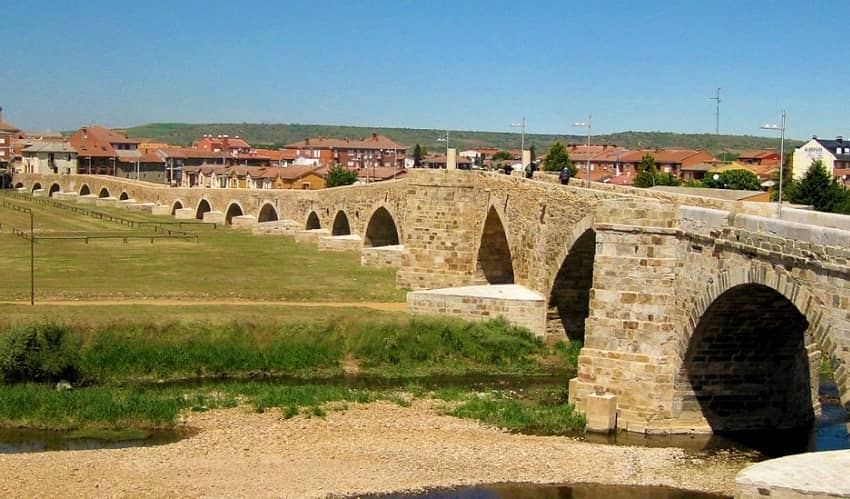
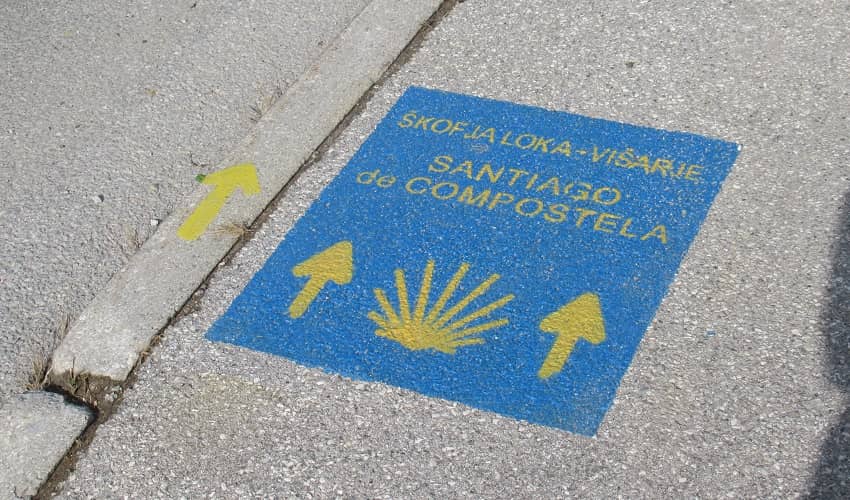
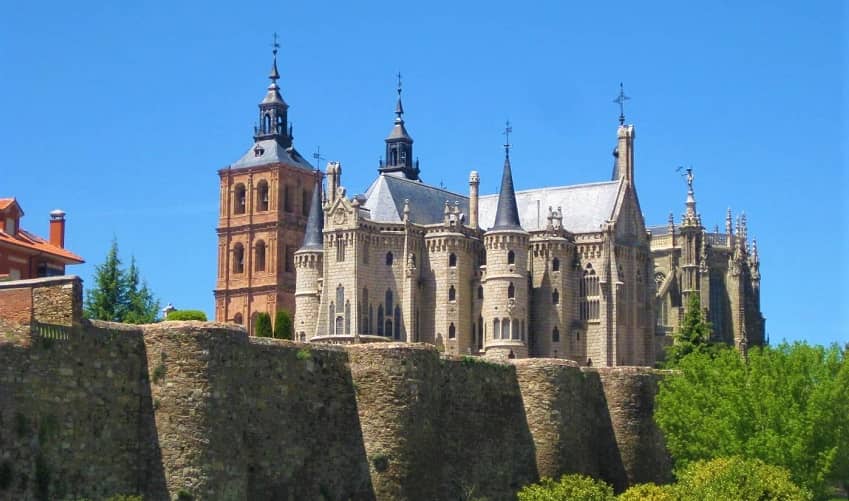
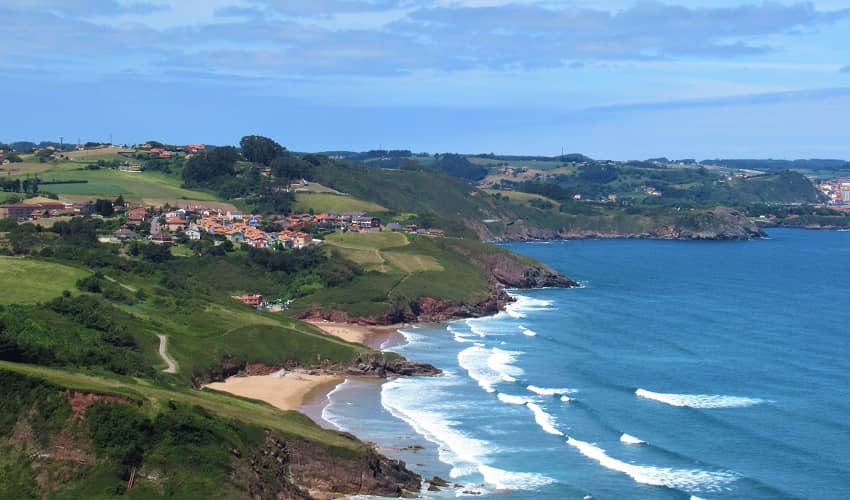
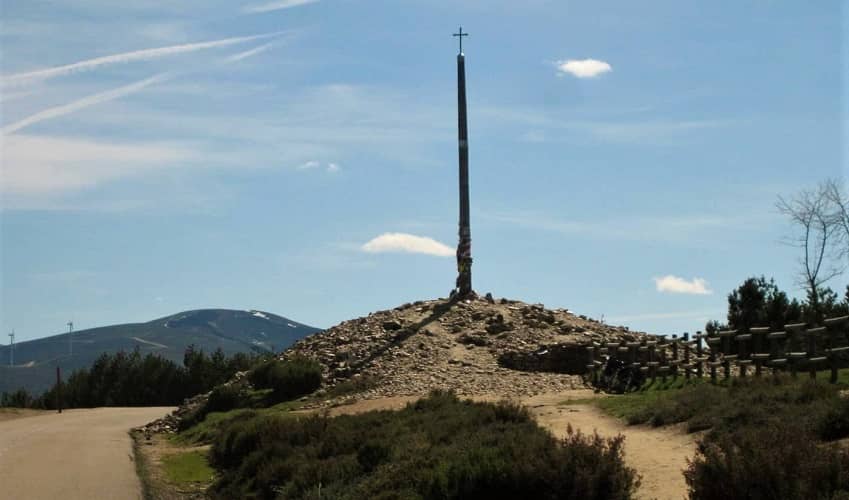
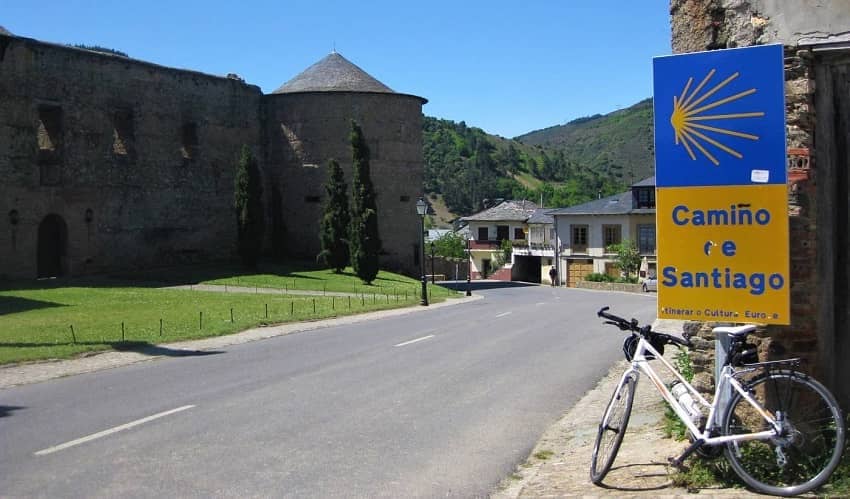
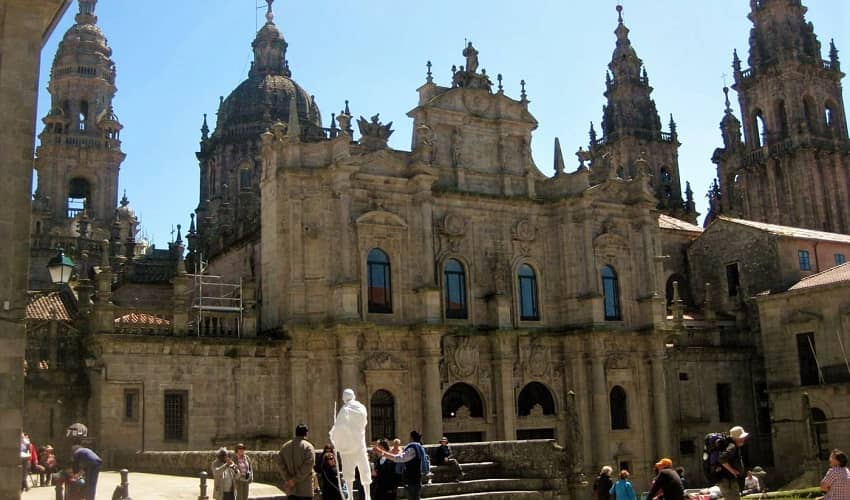
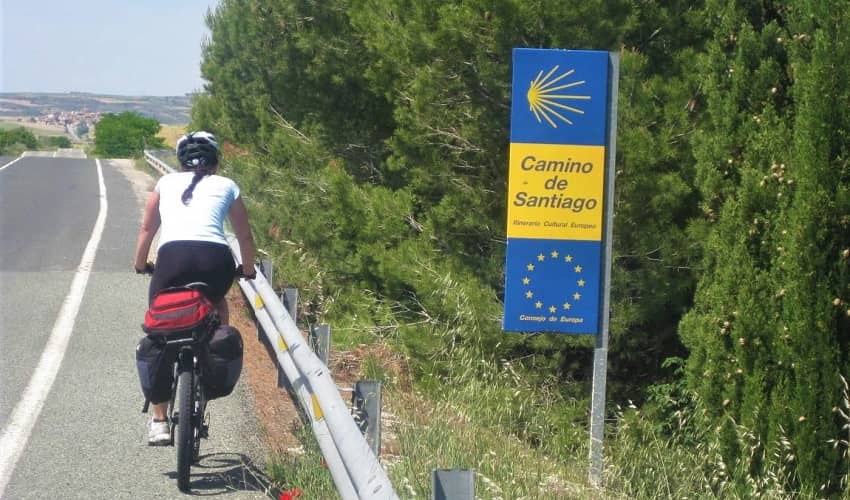
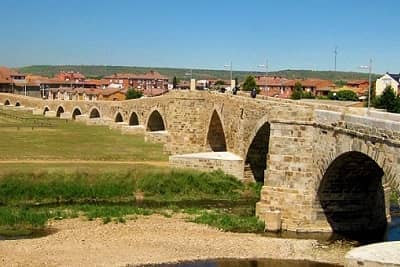
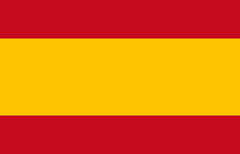 Spain
Spain